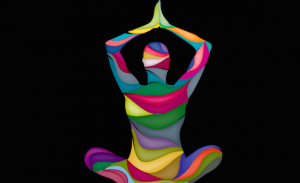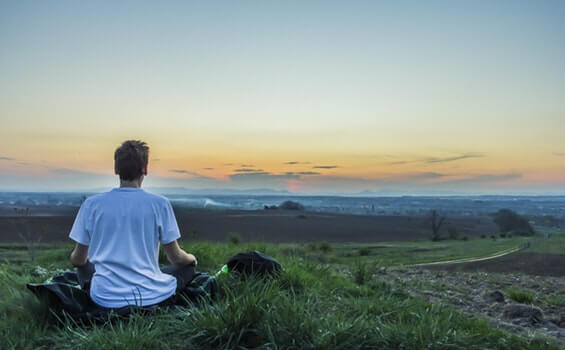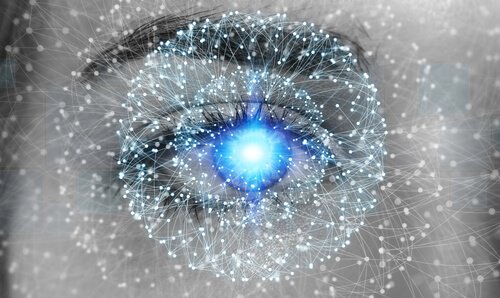Vipassana Meditation: The Technique of Mental Purification


Written and verified by the psychologist Valeria Sabater
Vipassana meditation is a powerful practice that can help eradicate the ultimate causes of suffering and obtain the genuine happiness that results from complete liberation.
This is also one of the oldest meditation techniques in India. It’s a transforming path based on self-observation and contemplation. Vipassana consists of using our mind to find the answers to those big questions that affect us. Some of these questions are: Who am I? How can I free myself from my suffering? What is my relationship with the world?
Those who dedicate their lives to instructing others in the practice of meditation often repeat the same phrase to their students: “You have to perceive where you are to get where you need to go”. This is definitely something we should reflect on.
“Meditation teaches us to cure what need not be endured and endure what cannot be cured.”
-Allan Lokos-
In our hectic modern world, there are plenty of people who place a thousand and one projects, desires, and goals on their plate. We all do it, in fact. Each one of us sets great goals for our near future.
However, before reaching these goals, we must remember where we started. We have to see things clearly and objectively. We have to know what surrounds us. Also, we must know that, in some way, these goals can ultimately make us suffer.
Implementing Vipassana meditation
Humans have the bad habit of not letting themselves soak in their sorrow. Oftentimes, we run out and patch everything up before it can bother us. We’re experts in the art of ignorance. We ignore the fact that our ignorance makes us stumble and sometimes fall into a deep pit caused by our own actions. This deep pit is filled with our conflicting emotions, such as hatred and anger. They trap us and keep us from taking action. But how do we free ourselves?
Buddhist meditation shows us two things that can help us: Samatha and Vipassana. Although in this article we’ll delve into the latter, it’s worthwhile to clarify that practicing Samatha is fundamental. If we’re not able to get in touch with our emotions, we won’t be able to achieve true Vipassana. This is a practice that’s perfect for achieving personal growth.
Therefore, we’ll only be able to perceive a lot more things when our mind is at peace. We’ll have more self-confidence. This will help us reach our goals and ultimately unveil the answers to those mysteries that sometimes govern us.

Vipassana meditation: What is it?
Those who don’t know a lot about meditation will undoubtedly think that all meditations are the same. For any neophyte, mediation is only an exercise where people sit in a certain position, close their eyes, and proceed to relax their mind. Now, those who practice Vipassana meditation indicate that it must be differentiated from other practices.
- Experts say it’s over 2,500 years old. Moreover, there are texts that reveal that it originated in India.
- In addition, Vipassana means insight. That’s the capacity to discover and see things as they are.
- In essence, it’s that impulse that allows us to realize things and, in turn, eradicate misconceptions and false beliefs.
- One of the principles of Vipassana meditation is that life has many layers. Only when we learn to meditate, will we be able to train our eyes to see through those layers with total clarity.

How to practice Vipassana meditation
Vipassana meditation requires a very particular attitude. We must set aside everything we’ve been told or believe about meditation. We must banish all prejudice and stereotypes we might have about it.
It’s a way to purify our focus, to start with that tabula rasa where we can be more receptive than ever to everything we’re going to learn and experience. We can’t forget that the mind is very deceptive. Sometimes we’re trapped in a complex cycle of ideas, perceptions, and beliefs that make it hard for us to be more open to everything around us. However, Vipassana meditation demands openness.
- As we’ve pointed out, we combine breathing with mental focus in this practice. Therefore, we must be aware of each sensation as we’re breathing.
- Also, we must focus on something very specific (some people look at a candle or any other object). This way, we’ll be aware of how our mind wanders and train our perception and attention.
- Likewise, while we inhale and exhale, we must also be aware of the sensations our body experiences. It’s like scanning the body and seeing everything we can perceive.
The mental portion
After going through that physical journey, we need to focus on our mind and thoughts. To do this, we can focus on a specific question or observe an external event. We need to observe what’s inside. Also, we need to purge our fears, ideas, thoughts, and beliefs. We have to let them go and relax our mind.
Some compare Vipassana meditation to the process of taming a wild elephant. At first, the elephant will be violent, restless, and nervous. But if we approach the animal with kindness and intuition, it’ll be receptive.

In conclusion
Vipassana meditation has many advantages. In addition to those that it shares with the most basic types of meditation, it allows us to see things differently. It also causes a consciousness shift. Vipassana gives us the possibility of seeing things as they really are.
In addition to Vipassana meditation, there’s Vipassana insight, which only the most advanced students access. Those who are attracted to this practice tend to delve a little deeper into the knowledge of the mind and its relationship with the body. This is known as the sixteen stages of insight. These theoretical axes range from the knowledge of the cause-effect relationship between mental and physical states to the mind’s impurities.
Vipassana meditation is definitely a great practice that can help us learn how to connect to our mental states in a more positive way.
This text is provided for informational purposes only and does not replace consultation with a professional. If in doubt, consult your specialist.








